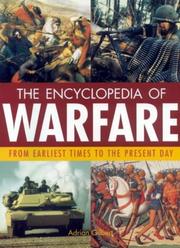| Listing 1 - 10 of 1310 | << page >> |
Sort by
|
Book
Abstract | Keywords | Export | Availability | Bookmark
 Loading...
Loading...Choose an application
- Reference Manager
- EndNote
- RefWorks (Direct export to RefWorks)
Book
Abstract | Keywords | Export | Availability | Bookmark
 Loading...
Loading...Choose an application
- Reference Manager
- EndNote
- RefWorks (Direct export to RefWorks)
Book
Year: 1895 Publisher: London : Methuen & C,
Abstract | Keywords | Export | Availability | Bookmark
 Loading...
Loading...Choose an application
- Reference Manager
- EndNote
- RefWorks (Direct export to RefWorks)
Book
Year: 2003 Publisher: [Place of publication not identified] : Project Gutenberg,
Abstract | Keywords | Export | Availability | Bookmark
 Loading...
Loading...Choose an application
- Reference Manager
- EndNote
- RefWorks (Direct export to RefWorks)
Ranging from Marathon to Waterloo, this classic of military history chronicles battles that changed the course of history. Originally published in 1851, at the zenith of British imperial power, it found an eager audience of readers who wanted to understand how Britain had achieved its tremendous influence and how long it would last. Since then, these chronicles of ancient and modern military confrontations have informed and inspired generations of students and armchair historians. Educated at Eton College and the University of Cambridge, Sir Edward Shepherd Creasy was called to the Bar in 1837, appointed to the faculty of the University of London in 1840, and served as Chief Justice of Ceylon from 1860 to 1870. Creasy's scholarship and literary skill are complemented by his judicial attitude, which endows this book with a fair-minded, nonpartisan approach. He prefaces each battle with an introduction that explains the circumstances surrounding the war, as well as an afterword that considers how history might have changed had victory gone to the other side. Linking passages offer valuable insights into historical events that occurred between the major encounters. Influential and ever-popular, this book offers authoritative and entertaining analyses of the conflicts that shaped world history.
Book
Year: 2003 Publisher: [Place of publication not identified] : Project Gutenberg,
Abstract | Keywords | Export | Availability | Bookmark
 Loading...
Loading...Choose an application
- Reference Manager
- EndNote
- RefWorks (Direct export to RefWorks)
Ranging from Marathon to Waterloo, this classic of military history chronicles battles that changed the course of history. Originally published in 1851, at the zenith of British imperial power, it found an eager audience of readers who wanted to understand how Britain had achieved its tremendous influence and how long it would last. Since then, these chronicles of ancient and modern military confrontations have informed and inspired generations of students and armchair historians. Educated at Eton College and the University of Cambridge, Sir Edward Shepherd Creasy was called to the Bar in 1837, appointed to the faculty of the University of London in 1840, and served as Chief Justice of Ceylon from 1860 to 1870. Creasy's scholarship and literary skill are complemented by his judicial attitude, which endows this book with a fair-minded, nonpartisan approach. He prefaces each battle with an introduction that explains the circumstances surrounding the war, as well as an afterword that considers how history might have changed had victory gone to the other side. Linking passages offer valuable insights into historical events that occurred between the major encounters. Influential and ever-popular, this book offers authoritative and entertaining analyses of the conflicts that shaped world history.
Book
Year: 1587 Publisher: At London : Printed [by Thomas East] for Gabriell Cavvood,
Abstract | Keywords | Export | Availability | Bookmark
 Loading...
Loading...Choose an application
- Reference Manager
- EndNote
- RefWorks (Direct export to RefWorks)
eebo-0113
Book
ISBN: 365778912X 3506789120 Year: 2019 Publisher: Paderborn, Deutschland : Verlag Ferdinand Schöningh,
Abstract | Keywords | Export | Availability | Bookmark
 Loading...
Loading...Choose an application
- Reference Manager
- EndNote
- RefWorks (Direct export to RefWorks)
Die Schlacht bei El Alamein im Herbst 1942 beendete den Siegesmarsch des "Wüstenfuchses" Erwin Rommel und damit jede Hoffnung der Achsenmächte, in den Besitz des Suezkanals zu gelangen. Den englischen Kriegsbemühungen hatte so ein entscheidender Schlag versetzt werden sollen. Während das populäre Bild des Wüstenkrieges bis heute von der Vorstellung blitzartiger Vorstöße deutscher Panzer geprägt ist, handelte es sich bei El Alamein jedoch eher um eine Material- und Abnutzungsschlacht. Die Achsenmächte waren von Beginn an unterlegen. Alexander Querengässer korrigiert in seinem Buch manche verbreiteten Vorstellungen vom Krieg in Nordafrika. Hatten die Deutschen bis dahin ihren Gegnern eine bewegliche Kriegsführung aufzwingen können, so war es der britischen 8. Armee bei El Alamein gelungen, Rommels Vormarsch zum Stehen zu bringen, die Front zu festigen und später mit großer materieller Überlegenheit einen Gegenschlag zu führen. Alexander Querengässer betrachtet die gemeinhin als Erste und Zweite Schlacht von El Alamein bezeichneten Ereignisse in ihrem Zusammenhang. Er beleuchtet die Bedingungen und konkreten Umstände der Auseinandersetzung im Rahmen der Kriegslage und zeigt die operationsgeschichtlichen Besonderheiten auf. Aber auch die unmittelbaren Konsequenzen für den Kriegsverlauf kommen zur Sprache. Ein eigenes Kapitel ist dem Fortleben der Schlacht in den Erinnerungskulturen der ehemaligen Kriegsgegner gewidmet.
Book
Year: 1578 Publisher: Imprinted at London : By Henrye Bynneman, & Francis Coldock,
Abstract | Keywords | Export | Availability | Bookmark
 Loading...
Loading...Choose an application
- Reference Manager
- EndNote
- RefWorks (Direct export to RefWorks)
eebo-0113
Book
ISBN: 1536168246 9781536168242 Year: 2019 Publisher: New York Nova Science Publishers, Incorporated
Abstract | Keywords | Export | Availability | Bookmark
 Loading...
Loading...Choose an application
- Reference Manager
- EndNote
- RefWorks (Direct export to RefWorks)

ISBN: 1579582168 Year: 2000 Publisher: London Fitzroy Dearborn
Abstract | Keywords | Export | Availability | Bookmark
 Loading...
Loading...Choose an application
- Reference Manager
- EndNote
- RefWorks (Direct export to RefWorks)
| Listing 1 - 10 of 1310 | << page >> |
Sort by
|

 Search
Search Feedback
Feedback About UniCat
About UniCat  Help
Help News
News